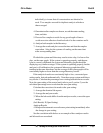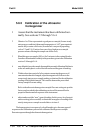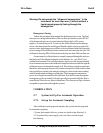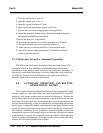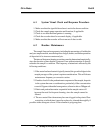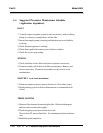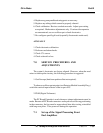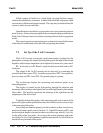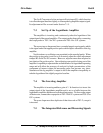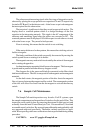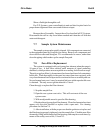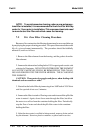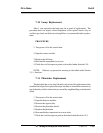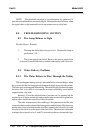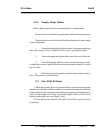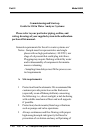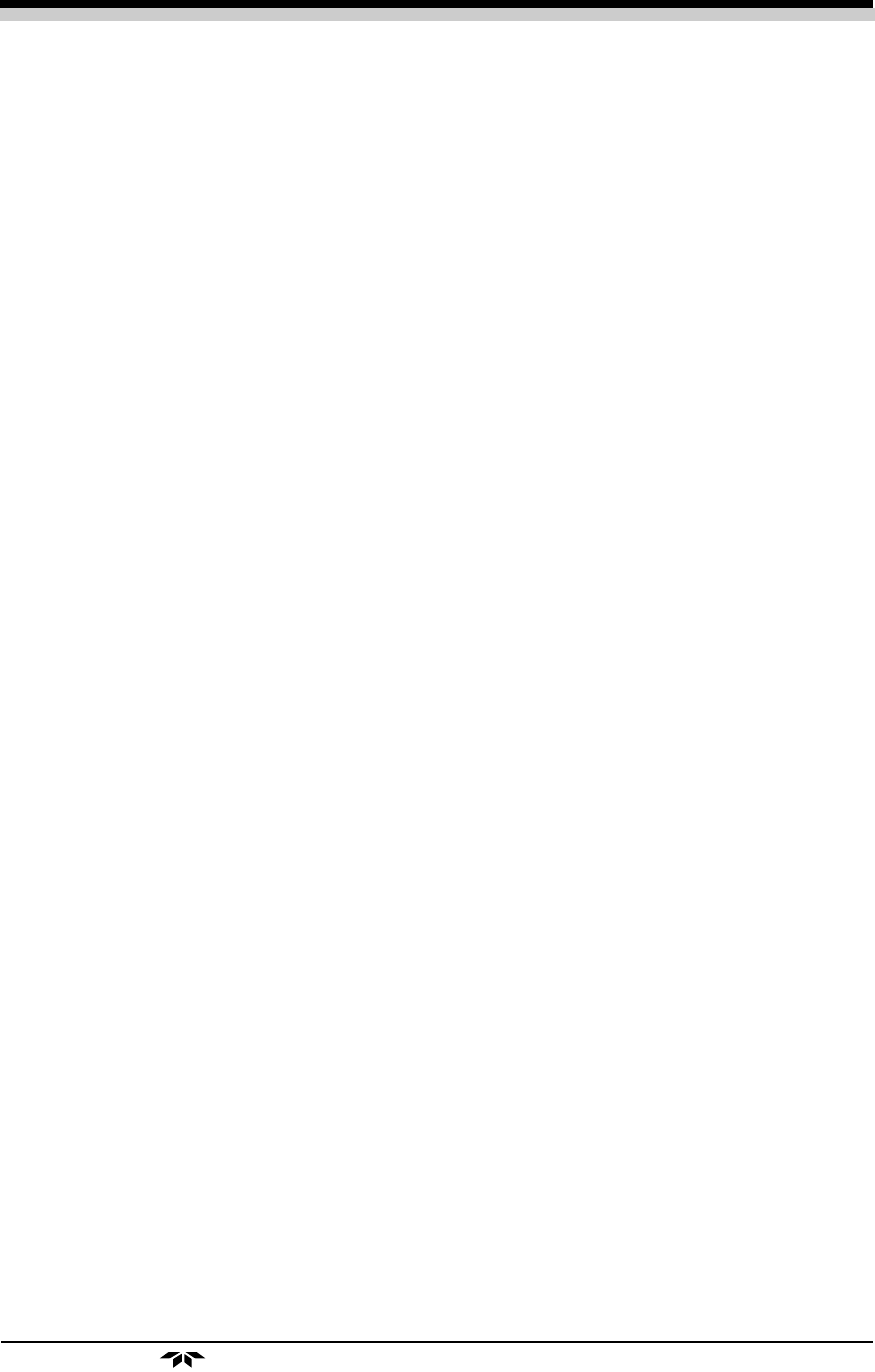
Part III: 1-41
Oil in Water Part III
Teledyne Analytical Instruments
The I to E Converter also has an input offset trimpot R3, which function
is to offset the signal baseline slightly, to clean up the log amplifier outputs signal.
Its adjustment will be covered under Section 7.1.5.
7.3 Set Up of the Logarithmic Amplifier
The amplifier is inverting and continuously takes the logarithm of the
output signal of the second amplifier. The output can be observed by connecting
the scope probe to TS2-3 for E.P. systems and TS5-4 for G.P. systems.
The correct wave shape must have a rounded negative going pulse which
is the signal and a flat topped positive pulse which depicts saturation of the log
amplifier.
No distortions or oscillations are permitted on the rounded peaks. When
the positive going pulse is not flat or is distorted, adjust the offset adjustment
trimpot R3 on the I to E Converter. However, adjust no more than required to
just obtain a flat positive pulse. Over adjusting can result in losing part of the
amplifier’s capability to operate in the second decade of its logarithmic operating
range and will affect the accuracy of analysis for high concentrations of the
component of interest where the measuring pulse can become very short.
Saturation of the log amplifier’s output is due to the amplifiers incapability to
take the logarithm of the slightly negative baseline.
7.4 The Inverting Amplifier
The amplifier is inverting and has a gain of 1. Its function is to invert the
output signal of the logarithmic amplifier and to act as a buffer between the
logarithmic amplifier and the reed switch and integrators. To observe the output
of the inverter, connect the scope probe to TS2-2 for E.P. systems and TS5-5 for
G.P. systems.
The wave shape must be a duplicate of that observed on TS2-2, except it
is inverted.
7.5 The Integrated Reference and Measuring Signals



